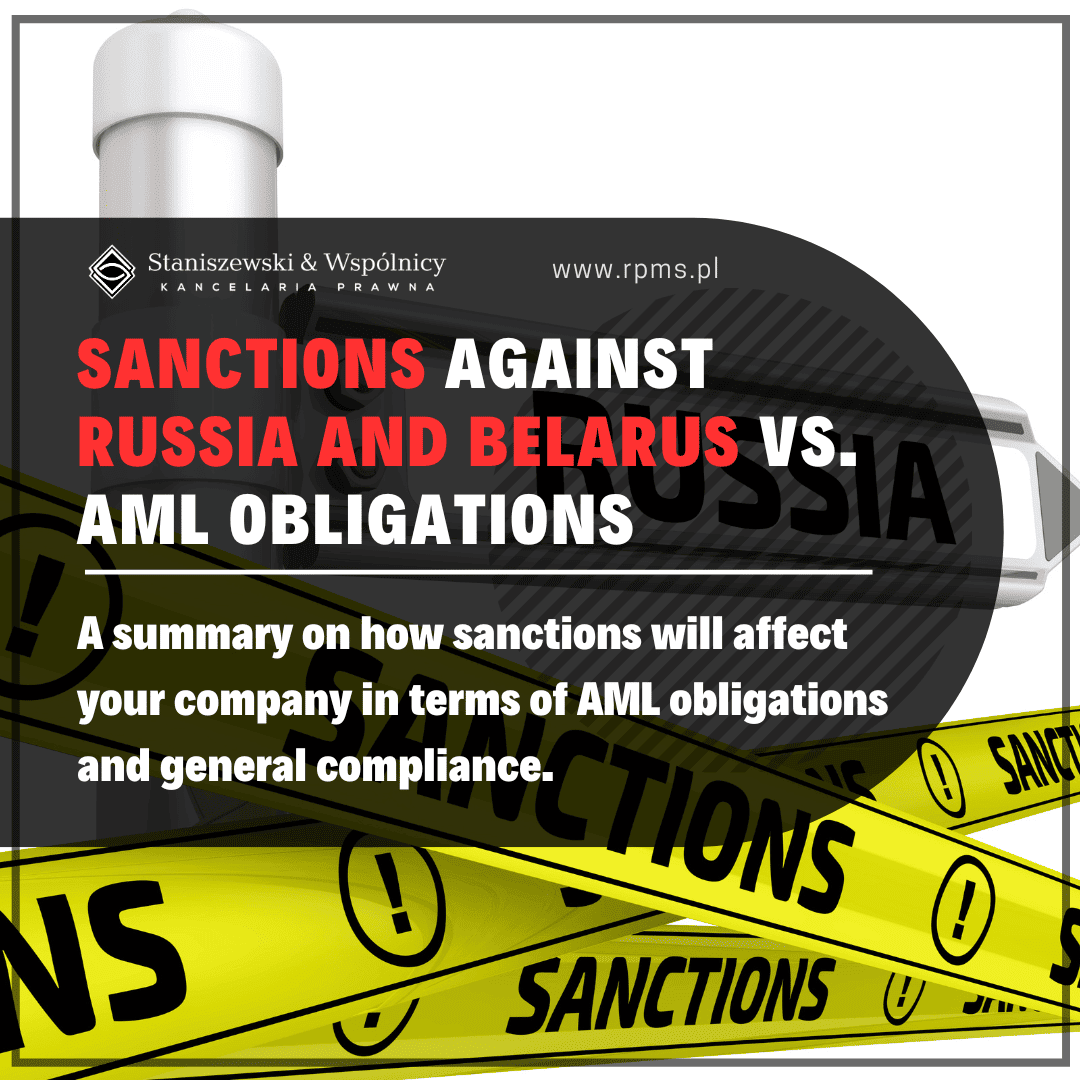Table of contents
The conclusion of business operations by a company and its liquidation is a lengthy process, which for entities operating on a significant scale can take even several years. However, there is a way to expedite the entire procedure, provided that the partners meet certain requirements. This is referred to as the “simplified liquidation of a company.” What should be known about it and who can benefit from it?
Which Companies Can Benefit from Simplified Liquidation?

As a rule, the simplified liquidation can be utilized by entrepreneurs conducting business in the form of:
- general partnership;
- limited partnership (by referring to the provisions on general partnerships);
- limited partnership with a limited liability partner (by referring to the provisions on general partnerships).
The Supreme Court confirmed the possibility of appropriately applying the provisions regarding simplified liquidation in its judgment of May 5, 2016, case No. II CSK 573/15 (in relation to a limited partnership). However, the simplified liquidation model will not apply to limited partnerships with a limited liability partner, whose operation and liquidation are partially regulated by the provisions on joint-stock companies.
In the case of a general partnership, the legal basis for simplified liquidation is Article 67 §1 of the Commercial Companies Code (CCC), which states that partners can foresee a different way of ending the company’s operations than those specified in Article 58 of the CCC, i.e.:
- reasons provided for in the company agreement;
- unanimous resolution of all partners;
- declaration of the company’s bankruptcy;
- death of a partner or declaration of their bankruptcy;
- termination of the company agreement by a partner or a creditor of a partner;
- final court ruling.
This “different way” is precisely adopting a resolution to terminate the company’s operations, but bypassing the liquidation provisions.
What is the Essence of Simplified Liquidation?
By choosing liquidation under the simplified procedure, partners do not need to notify the National Court Register (NCR) of its initiation. This is an additional facilitation for companies maintaining full accounting records, as they have fewer reporting requirements.
There is also no need to use a modified name indicating the commencement of liquidation; the name remains unchanged.
Crucially, bypassing the statutory liquidation allows maintaining the company’s existing representation model and retaining the granted power of attorney (which expires under standard liquidation). This means that partners do not have to appoint liquidators.
The company can be struck off the register without prior settlement of creditors’ claims (known as “debts”), which of course does not preclude them from pursuing their claims.

How Does Simplified Liquidation Proceed for a General Partnership?

The decision to waive the traditional liquidation procedure can be made by partners at any point in the company’s operation. There is no impediment to adopting a relevant resolution even after the occurrence of a circumstance justifying the initiation of liquidation proceedings due to one of the events referred to in Article 58 of the CCC. The provisions also do not require such a provision to be included in the company agreement. The unanimity of all partners is crucial for the success of simplified liquidation.
Interestingly, the Supreme Court indicated that simplified liquidation can even be decided upon when a resolution to terminate the company’s operations through liquidation has already been adopted (see Supreme Court judgment of January 10, 2020, case No. I CSK 552/18).
However, it should be noted that if the company agreement has been terminated by its creditor or the bankruptcy of a partner has been declared, an agreement regarding the termination of the company’s operations after the occurrence of the reason for its dissolution requires the consent of the creditor or the receiver, pursuant to Article 67 §2 of the CCC.
The simplified liquidation procedure is based on decisions made by the partners concerning:
- sale of the company’s assets;
- recovery of receivables and repayment of debts;
- management of the company during the winding-up period;
- distribution of the remaining assets among the partners.
Of course, the freedom to carry out these stages does not mean that partners can act to the detriment of creditors’ interests. Thus, general statutory principles regarding personal, subsidiary, and unlimited liability of partners for the company’s obligations still apply. This is because waiving full liquidation constitutes an internal determination that applies only to partners.
The specific course of simplified liquidation is decided by the partners each time, determining the scope of actions that must be taken to achieve the goal of striking the entity off the NCR. Sample actions could lead to:
- disposal of all company assets to a third party;
- allocation of the company to one of the partners with the obligation to settle with the other partners;
- distribution of the company’s assets among the partners without their sale.
Suppose the partners want the partnership, including both assets and liabilities, to be transferred to one of the partners or a third party. In that case, it is important to remember to observe the necessary formalities. These typically include not only agreements transferring ownership of items or rights but also liabilities. In such a situation, it is necessary for the successor to assume the debt.
It is difficult to identify the best method of ending operations, as much depends on the company’s individual situation, its indebtedness, liquidity of assets, and further business plans. It is also worthwhile to seek advice from a legal firm regarding potential transformations, which can be an attractive choice.
Considerations for Utilizing Simplified Company Liquidation?
The division of company assets among partners or its sale triggers specific tax consequences. On the part of the person receiving the asset, there arises an obligation in terms of personal income tax (PIT). Additionally, if the company transferring assets is subject to value-added tax (VAT), it should tax the transaction if the recipient has the right to deduct input VAT. From the tax law perspective, such an operation constitutes a taxable supply of goods (see the Administrative Court of Appeal judgment of September 11, 2018, case No. I FSK 1785/16 – although the judgment concerns a limited liability company, due to the very similar factual situation, it can be considered relevant).
Also, Article 25e of the National Court Register Act states that the State Treasury acquires the property remaining after the entity has been struck off the register free of charge by operation of law, regardless of the reason for removal, if the competent authority did not dispose of it before removal, at the time of removal from the register.

Safeguarding Company Documentation

In addition to actions that directly contribute to ending the company’s existence, partners should remember their archiving obligations concerning company documentation.
In accordance with Article 84§3 and 4 of the CCC, the books and documents of a dissolved company must be handed over for safekeeping to a partner or a third party for a period of not less than 5 years (longer for employee documentation). In the absence of the partner’s or third party’s consent, the court of registration designates the custodian. At the same time, all partners and individuals with a vested interest have the right to inspect the company’s books and documents.
Irrespective of the obligations stemming from the CCC, Article 86 §2 of the Tax Ordinance requires that in the event of liquidation or dissolution of a legal person or organizational unit, the entity performing its liquidation or dissolution must notify the competent tax authority in writing about the location where tax records and documents relating to their management are stored. The information must be provided no later than on the last day of the existence of the legal entity or organizational unit.
Simplified liquidation of a simple joint-stock company
In conclusion, we can point out the legal structure introduced in Article 300122 of the CCC, which concerns the possibility of one shareholder taking over the assets of a simple joint-stock company with an obligation to settle creditors. Although applicable to a capital company rather than a personal one, this solution is sometimes also referred to as simplified liquidation. To utilize this mechanism, the following is necessary:
- adoption of a resolution by the general meeting with a majority of 3/4 of the votes cast in the presence of shareholders representing at least half of the total number of shares;
- consent of the registration court to the acquisition of assets;
- likelihood demonstrated by the company that the takeover will not harm creditors or shareholders.
In case of doubt, the court may demand security from the acquiring shareholder. Each of the creditors also has the right to raise an objection, which would refute the likelihood of no harm.
Such a solution can be attractive for companies with a small number of creditors, as it significantly shortens the duration of the entire procedure compared to standard liquidation.
Simplified liquidation of a company not only saves time but also significantly reduces expenses. The actions undertaken by partners are generally fewer and more uncomplicated. On the other hand, there are no uniform model procedures, as in the case of classic liquidation, which would provide a framework for actions. Entrepreneurs considering using this method should seek legal advice from experienced specialists to ensure legal and procedural security.















